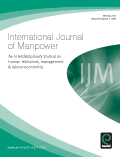Gender earning gaps around the world: a study of 64 countries
| Year | : | 2012 |
|---|---|---|
| Author/s | : | Hugo Ñopo, Nancy Daza, Johanna Ramos |
| Area/s | : | Employment, productivity and innovation, Ethnicity, gender and citizenship |
Ñopo, Hugo; Nancy Daza y Johanna Ramos (2012). Gender earning gaps around the world: a study of 64 countries. International Journal of Manpower, Emerald Group Publishing, vol. 33(5), pages 464-513, March
The purpose of this paper is to analyze gender disparities in labor earnings for a comprehensive set of 64 countries. Design/methodology/approach – Using the methodological approach proposed by Ñopo, socio-demographic characteristics are used to match males and females such that gender earnings disparities are computed only among individuals with the same observable characteristics. Findings – Disparities are partially attributed to gender differences in observable socio-demographic and job characteristics. After matching males and females with the same characteristics, the authors found that the earnings gap falls within a range between 8 per cent and 48 per cent of average females’ earnings, being more pronounced in South Asia and Sub-Saharan Africa. The unexplained earnings gaps are more pronounced among part-time workers and those with low education levels. Originality/value – The paper presents a comprehensive view of gender earnings gaps in the world, simultaneously exploring many of the issues highlighted in the related literature. It adds value by exploring gender gaps in a comparative perspective, applying the same methods for several different countries.







